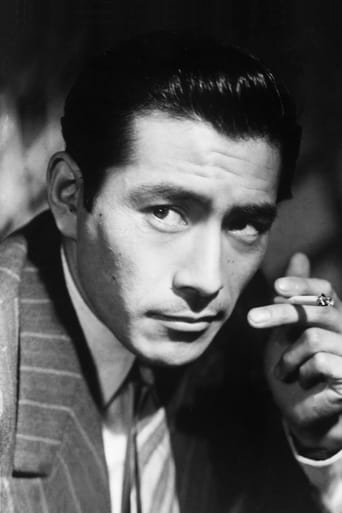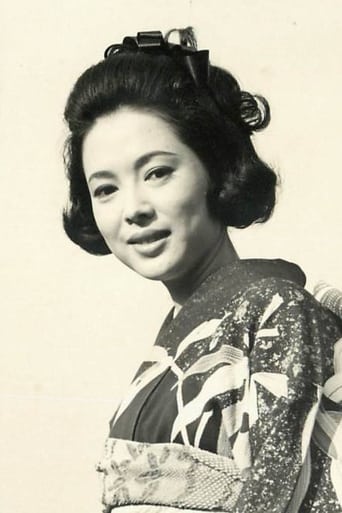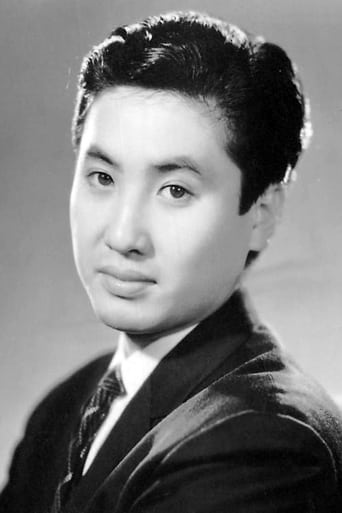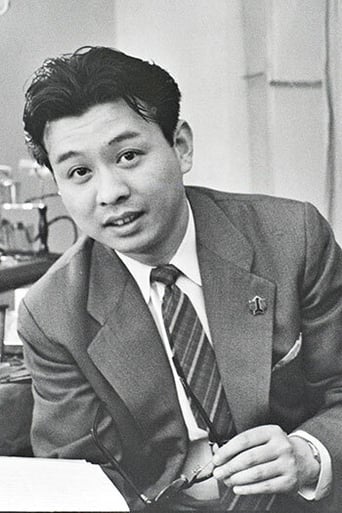Claysaba
Excellent, Without a doubt!!
TrueHello
Fun premise, good actors, bad writing. This film seemed to have potential at the beginning but it quickly devolves into a trite action film. Ultimately it's very boring.
BeSummers
Funny, strange, confrontational and subversive, this is one of the most interesting experiences you'll have at the cinema this year.
Hadrina
The movie's neither hopeful in contrived ways, nor hopeless in different contrived ways. Somehow it manages to be wonderful
Patrick McCoy
Samurai Banners (1969) is Hiroshi Inagaki's, know for The Samurai: Musashi Miyamoto trilogy, crowning achievement-a nearly three hour historically based epic starring Toshiro Mifune as a ronin determined to achieve greatness in his new clan by uniting Japan under one ruler. The story is based on a novel adapted by Shinobu Hashimoto (Rashomon and Seven Samurai) and takes place in the Sengoku warring period 1500-1600. At the time it was the most expensive Japanese film produced with several massive fight scenes that must have been expensive to stage. It immediately calls to mind Akira Kurosawa's two late samurai epic masterpieces Kagemusha and Ran. I wonder why he wasn't involved in the project that was made with his former leading man and the script writer of his greatest triumphs. Nonetheless, Inagaki with cinematographer Kazuo Yamada has created a stylish, colorful, and dynamic film.
chaos-rampant
For the whopping 2 hours and 45 minutes it lasts, Samurai Banners really has little to recommend it. Long movies are fine if that's how much it takes to communicate what you have to say, but there's a good 45 minutes here that could have been clipped and it would still be the same movie.Furin Kazan (as is the original title) was the name of the war banners used by one of the greatest warlords of 16th century Japan, Takeda Shingen, lord of the Takeda clan. The name is derived from Sun Tzu's famous book "Art of War", meaning "Swift as the Wind, Silent as a Forest, Fierce as Fire and Immovable as a Mountain". The movie recalls the early years of Takeda leading up to the defining battle of Kawannakajima. If the name is familiar, that's because it's the same character depicted by Tatsuya Nakadai in Akira Kurosawa's Kagemusha (there in his later years). Indeed, coming near the end of a prolific career, in many ways this is Hiroshi Inagaki's Kagemusha.Where SB falters is that it spends far too much time in namesdropping and planning battles than it does in actually showing them. Lots of build-up but little as far as spectacle goes. A mixture of politics, war strategy, romance and drama, this jidai-geki desperately calls for something to spice things up. The battle scenes are few and far between and really not very well choreographed. The final battle scene is particularly anti-climactic, more so after the massive built-up that leads to it. There's nice use of colours in banners and some beautiful exterior shots but much like Kagemusha, it feels like a dress rehearsal for a better movie. The extras seem to be going through the motions instead of giving it their all. Unlike Kagemusha though, this one doesn't have the deep character drama to go with it. Fortunately for us and perhaps the only thing that holds things together, is the typically fantastic Toshiro Mifune giving another solid performance. Playing Takeda Shingen's right hand, an ambitious man with dreams of a big, unified Japan under Takeda's banner, he's consistently great. Of course he doesn't do anything he hasn't done better under Kurosawa's direction, but he's always a pleasure to watch.
massaster760
After watching Samurai Banners, I was struck with one piece of dialog which sums up the film quite nicely, "In this age of war, survival requires complex conspiracies, secret dealings, and assassinations. They're inevitable." These two lines help describe the atmosphere of 16th century Japan, in which Samurai Banners is set. A Japan divided by warring factions and lords, where treachery and war are the only way of life.Yamamoto Kansuke (Mifune) is a ronin, who through chance of fate finds himself protecting Lord Takeda's vassal from another Ronin (in a very bloody exchange). Kansuke then moves to the province of Kai, where Lord Takeda awards him a troop of 100 soldiers. Once established Kansuke moves his way up to be Lord Takeda's top military adviser. With Kansuke's help the province of Kai stretches it's grasp to the other provinces through a series of, "complex conspiracies, secret dealings, and assassinations." Samurai Banners is an intricately researched samurai epic. The outfits are incredible, especially Mifune's fearsome black samurai armor which boasts the most incredible helmet I've ever seen. The outfits of the Red Guard are also very impressive and help add to the allure of the film. The set's also match the intensity of the outfits and this film highly succeeds in painting an accurate picture of 16th century Japan.Mifune is as bad-ass as ever (Of course!) but this time around he sports (besides the crazy armor) a ugly scar, a noticeable limp, and a awesome moustache. In Samurai Banners he plays the "terrifying" Kansuke, a man who is both feared and revered by his troops. In typical Mifune fashion, his one soft spot is for a woman named Pricess Yu. Both the Lord's concubine and an unrequited love interest for Kansuke.The film itself stays true to the tradition of 60's chambara; a mix of action, romance, war tactics, and character development, which together, helps round out another solid entry for both Mifune and Director Inagaki Hiroshi. The film substitutes most of the battles for the strategies and goings on of the Lord's and his advisor's, although the film has its share of action don't go into this expecting an action packed Chambara flick.Bottom Line- Good historical war epic with a focus on the people involved more-so than the actual battles. Mifune is a bad as ever!
weber
One of the best samurai epics. "Furinkazan" tells the story of the 16th century warlord Takeda Shingen and his loyal general Yamamoto Kansuke (Mifune Toshiro) embedded in the story of the Takeda clan's rise to power. Outstanding sets, costumes and Sato Masaru's rich soundtrack make the drama highly enjoyable.





